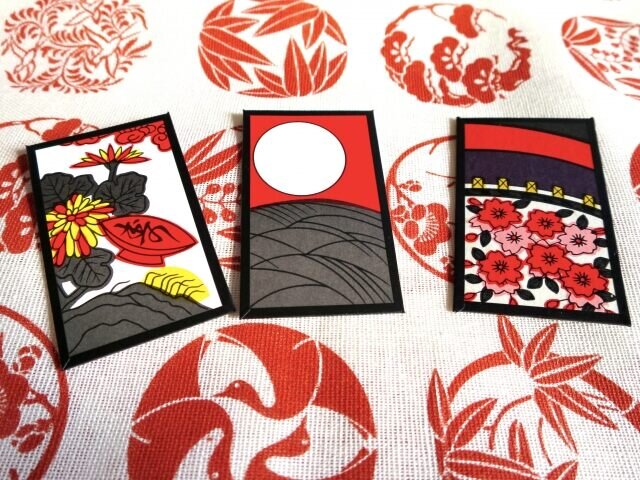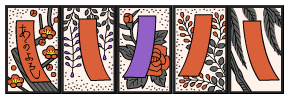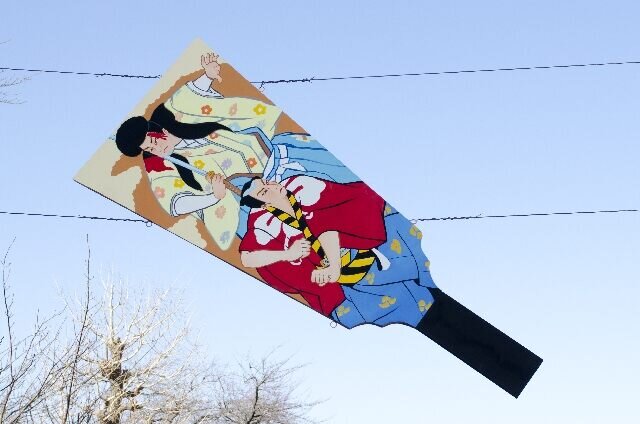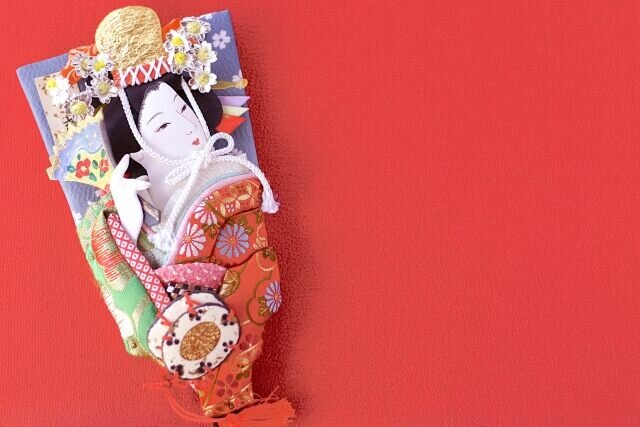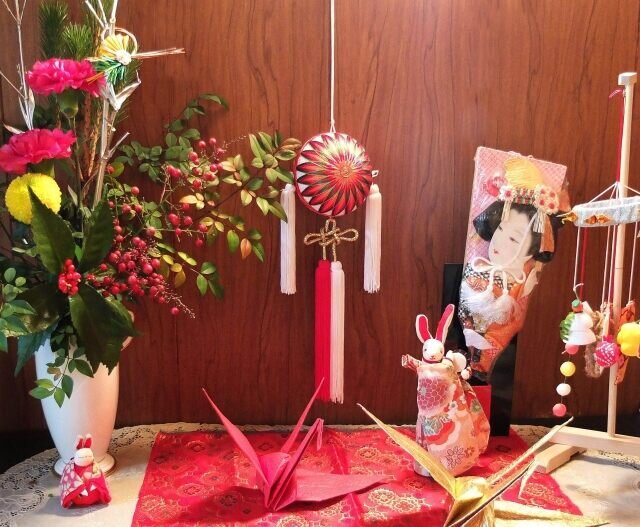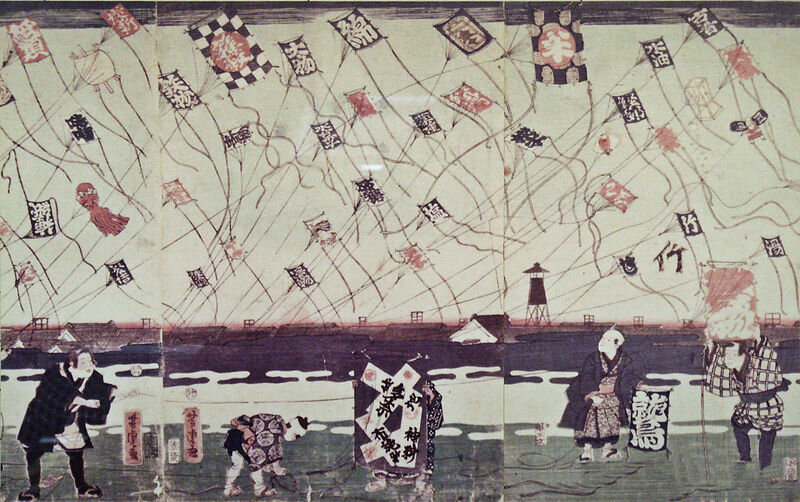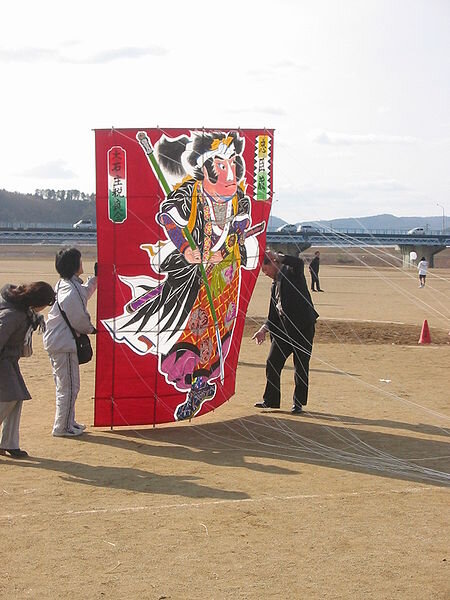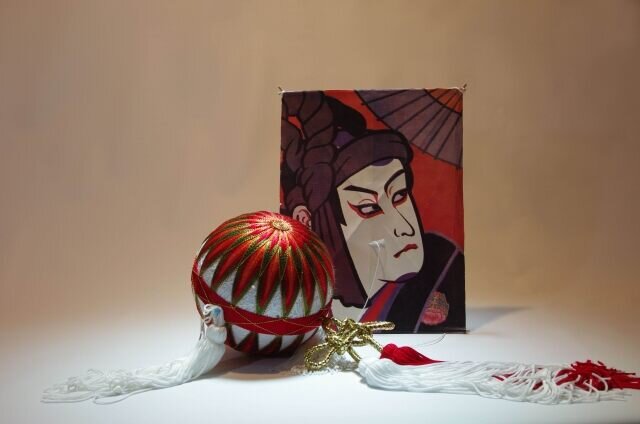New Years Food, Family Games
Osechi (New Years Food)
The tradition behind osechi ryori goes back centuries, to the Heian period (794-1185). Ritual offerings of food used to be presented to the gods on sechinichi, or days that marked the changing of the seasons according to traditional Chinese almanacs that were used during this time. The most important sechinichi, of course, was the day that marked the beginning of the New Year. On this day, special dishes were offered to various deities, and also eaten by members of courtly society.
Over the centuries, these traditions made their way to the rest of society, and by the Edo period (1603-1868), they were being practiced commonly around Japan. They combined with other beliefs, notably that on the first days of the New Year, any kind of work – including cooking – was to be avoided. There are two competing theories as to why this was the case. One was that the gods shouldn’t be disturbed by the sounds of cooking on the first days of the year, and the other is simply that the beginning of the year was meant to be a time of rest, when everyone – particularly the women of the household, who did most of the work around the home in those days – could enjoy a well deserved break.
Black beans: Kuromame (黒豆) are meant to be a symbol of health, with the associated idea that the person will be able work hard in the year to come.
Kazunoko: The dish is herring roe, but the symbolism is connected both the the large number of tiny eggs, and to the meaning of the Japanese words. Kazu means “number” in Japanese, and “ko” means children. The wish behind this item is that the next year will bring many children. For an extra layer of meaning, look to the name of the fish in Japanese: the word for herring is nishin, and if it’s written with an alternate set of kanji (二親), it means “two parents.”
Tazukuri: The dish is sardines boiled in soy sauce. Historically, sardines were used to fertilize rice fields, and this word means “rice field maker” (田作り) in Japanese. Symbolically this food is eaten in the hopes that the coming year’s harvest will be plentiful.
Kōhaku kamaboko: Kamaboko is a kind of fish cake, and kōhaku means red and white. The colors represent Japan (most easily found on the country’s flag), and are generally considered to be good luck. According to some, the red color is meant to prevent evil spirits, while white represents purity. Incidentally, Kōhaku Uta Gassen is one of the most popular TV shows that people watch on New Year’s Eve, and it’s a singing competition between two teams – the white and the red.
Datemaki: An omelette mixed with mashed shrimp or hanpen (fish paste). It tastes a little bit different from the tamagoyaki that you might be used to, but it’s rolled into a similar shape, which happens to look like a scroll from the side. That’s why this particular food is associated with learning and scholarship.
Kurikinton: These are sweet dumplings that are made from chestnuts. Because they’re yellow in color, they’re associated with gold, and eating them is meant to bring financial prosperity in the year to come.
Kobu: This is a type of seaweed, and this word is closely connected to the word yorokobu, or happiness, which is what this food is meant to bring in the New Year.
Kōhaku namasu: A vinegared salad made with carrot and daikon. It’s pretty close to red and white in color, so it is meant to provide some of the same benefits as kōhaku kamaboko.
Tai :Sea bream; the symbolic meaning here is something of a play on words. Tai is part of the Japanese word medetai, meaning happy or joyous. This fish is often eaten on special occasions, and it’s one of the dishes that is served as okuizome, the traditional food that a baby is fed about 100 days after he or she is born. In osechi, it’s meant to bring joy and happiness in the new year.
Shrimp: The kanji for shrimp (海老) mean “old man of the sea,” playing on the sea creature’s bent back and antenna that look like whiskers. This food is meant to bring longevity.
Satoimo: Also known as taro root, this dish is eaten in the hopes that the family will be blessed with many children – just like many small taro tubers grow off of the main tuber.
Renkon: Known as lotus root in English, this vegetable has very distinctive holes when it is cut in cross sections. Because you can see clearly when you look through these holes, this food is eaten in the hopes of having a future with no obstacles – or at the very least, obstacles that you can see clearly…
Kuwai: This is an underwater plant that grows a long tuber. This long, extended shape has led to its association with having a long, steady career – no job-hopping for this delicacy!
Gobo: Burdock root is a commonly eaten vegetable in Japan, and one of its characteristics is that it’s hard to cut down, and it stays firmly planted in the soil. As osechi cuisine, it’s meant to impart strength and stability.
Zoni: A simple soup, flavored with dashi (a stock made from bonito and/or seaweed) in eastern Japan and with miso in the Kansai area, served with chewy pieces of mochi (rice cakes).
New Years Games
In the last days of new years we play games at home. A popular card game is Karuta. You can read the rules here: http://karuta.game.coocan.jp/handbook%20e.pdf
Hagoita are small decorative wooden paddles that act as good luck charms for the New Year. These ornaments can be bought at fairs occurring from mid December to early January.
The original wooden paddles that these charms are based on are from a Japanese game called hanetsuki. In this badminton-type game, players strike bad luck away with the paddles.
Modern hagoita are often adorned with 3-dimensional artwork made of silk, washi paper, or wood. The art usually resembles Japanese geisha, kabuki actors, or sumo wrestlers. Specialty stores may sell hagoita decorated with Japanese characters, famous actors, or even Disney characters. Some very special hagoita will also be embellished with gold leaf. Hagoita displaying one kabuki actor is known as hitori-dachi, and one displaying two kabuki actors are known as futari-dachi. In very rare instances, a hagoita will display as many as FIVE kabuki actors on it. This would be known as a gonin-dachi.
Takoage kite flying is a favorite. The kite flying New Years tradition is so prevalent in Japan because the Tokugawa shogun during the late Edo period restricted the flying of kites except during the New Year’s period.They are sold in convenience stores and toy shops around mid December.



